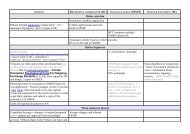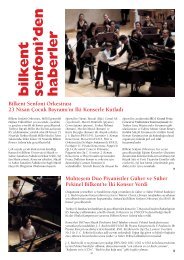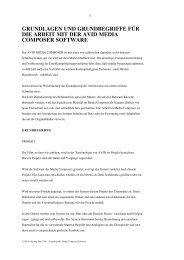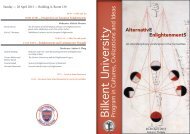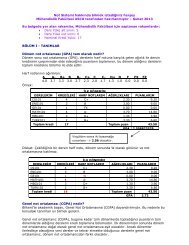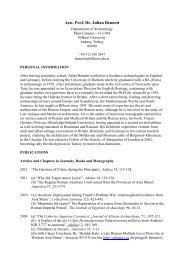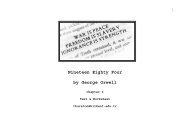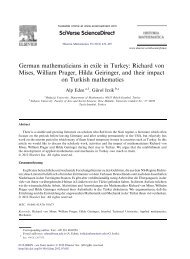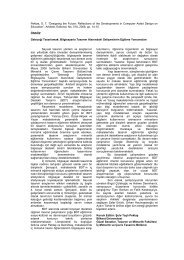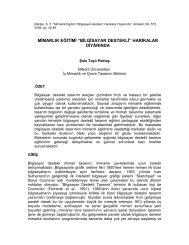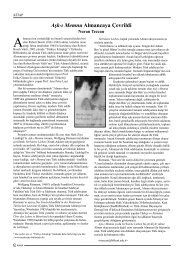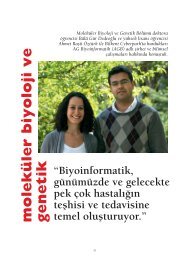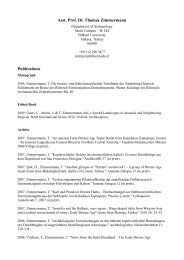The word Berat comes from the Arabic word ... - Bilkent University
The word Berat comes from the Arabic word ... - Bilkent University
The word Berat comes from the Arabic word ... - Bilkent University
You also want an ePaper? Increase the reach of your titles
YUMPU automatically turns print PDFs into web optimized ePapers that Google loves.
a. <strong>The</strong> Use of Biti, Bitik<br />
In documents written in <strong>the</strong> second half of <strong>the</strong> fourteenth century<br />
and in <strong>the</strong> fifteenth century, <strong>the</strong> <strong>word</strong> biti had different meanings, such<br />
as letter, <strong>word</strong>, berat, hüküm, nishan, mithal . We do not know about<br />
<strong>the</strong> etymology of <strong>the</strong> <strong>word</strong> biti and its root bitimek. However, it is<br />
assumed that <strong>the</strong> <strong>word</strong> <strong>comes</strong> <strong>from</strong> a Chinese <strong>word</strong> "pi- bit/piet " which<br />
means writing- brush. 28 In various dialects of <strong>the</strong> Turkish language, biti,<br />
bitik, bitiv, bituv, buti all mean writing or letter. Bitiglig (<strong>the</strong> owner of a<br />
written document) and bitigu (ink) come <strong>from</strong> <strong>the</strong> same root. 29 Bitig tili<br />
is language of a book; bitig ostasi, a teacher; ulug bitikci (in eastern<br />
dialect) <strong>the</strong> head of <strong>the</strong> clerks. 30<br />
Yusuf Has Hacib mentions an officer "bitikci, bitikci ılı mga " who<br />
conducted <strong>the</strong> correspondence of <strong>the</strong> sultan and who was <strong>the</strong> confidant<br />
31 According to Kasgarli Mahmud "ilimga " was <strong>the</strong> person who wrote<br />
<strong>the</strong> letters of <strong>the</strong> sultan in Turkish. 32 Fuat Köprülü argues, in his<br />
explanation of <strong>the</strong> <strong>word</strong> "nishan ", that official documents written in <strong>the</strong><br />
fourteenth and fifteenth century are called "biti" instead of "nishan ".<br />
<strong>The</strong> documents belonging to <strong>the</strong> earliest Ottoman sultans, published by<br />
Kraelitz in TOEM, prove this claim. In <strong>the</strong> waqf registers of <strong>the</strong> time,<br />
says Köprülü, "emirname ", decrees by <strong>the</strong> sultan or prince, were called<br />
"nishan", while those by begs , beglerbeg s and kadi s were called biti.<br />
Terms in <strong>the</strong> registers such as "örüncek bitisi" and "gökce ören bitisi"<br />
are as yet unexplanied. Köprülü also accepts that <strong>the</strong> <strong>word</strong> biti is<br />
derived <strong>from</strong> "pit " which means brush in Chinese. 33<br />
28 Şiratori, Sinologische Beitrage zur Geschichte der Türkvölker , Petersburg: 1902,<br />
II,16. Also A. von Gabain, Altürkische Gram m atik, Leipzig; 1942, 303. Mecdud<br />
Mansuro ğlu, "Bitikçi", İ slam Ansiklopedisi , v.2, 657. M. İpşirli, "Bitikçi", Diyanet<br />
İ slam Ansiklopedisi , v. 6, 225.<br />
29 For more information see G. Doerfer, Turkische und Mongolische Elemente im<br />
Neupersischen , Wiesbaden: 1965, II/262 - 64.<br />
30 M. Mansuro ğlu,<br />
657.<br />
31 Kemal Eraslan (ed.), Kutadgu Bilig , III, İstanbul:<br />
1979, 93- 95.<br />
32 Divan- i Lugat al Turk , İstanbul:<br />
1333 (1918), I/127.<br />
33 F. Köprülü, Bizans Müesseselerinin Osmanl ı Müesseselerine Tesiri , İ stanbul: 1981,<br />
62- 3.<br />
8



